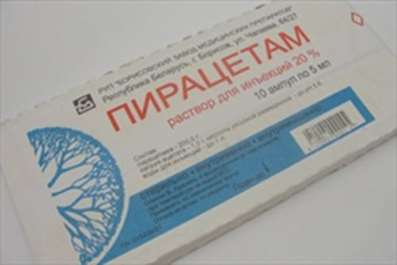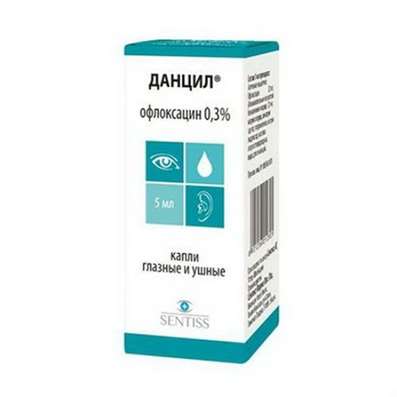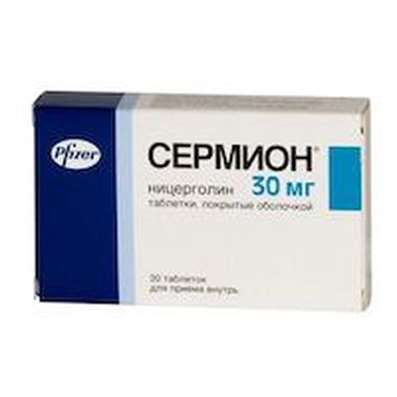Instruction for use: Pyrogenalum
I want this, give me price
Dosage form: A set of suppositories; for intramuscular injection; Rectal suppositories
ATX
L03AX Other immunostimulants
Pharmacological group:
Other immunomodulators
The nosological classification (ICD-10)
A16 Tuberculosis of respiratory organs, not confirmed bacteriologically or histologically
A64 Sexually transmitted diseases, unspecified: Infections of the male genital tract; Venereal infections; Sexually Transmitted Infections
B00.5 Herpetic eye disease: Recurrent ophthalmoherpes; Herpetic keratitis; Ophthalmoherpes; Herpetic conjunctivitis; Herpetic uveitis; Herpetic keratitis; Herpetic stromal keratitis without ulceration of the cornea; Herpetic stromal keratitis with ulceration of the cornea;Eye shape Herpes zoster; Herpetic keratoconjunctivitis; Conjunctivitis herpeticum; Herpetic conjunctivitis; Deep forms of ophthalmoherpes; Superficial herpetic keratitis
G98 Other disorders of the nervous system, not elsewhere classified (residual phenomena of craniocerebral injuries)
H17 Corneal scars and opacities: Corneal opacity; Corneal scars
H19.1 Keratitis due to herpes simplex virus, and keratoconjunctivitis (B00.5 +): Recurrent ophthalmoherpes; Ophthalmoherpes; Herpetic keratoconjunctivitis; Herpetic conjunctivitis
H20 Iridocyclitis: Recurrent Irritis; Sympathetic iridocyclitis; Sluggish posterior uveitis; Sluggish posterior uveitis; Posterior uveitis; Iridocyclitis of posterior segment of eye; Iridocyclitis and other uveitis; Irit; Keratoididocyclitis; Sharp Irritus; Uveitis; Cyclitis; Acute Iridocyclitis; Acute non-infectious uveitis
K66.0 Peritoneal adhesions
K76.9 Liver disease, unspecified: Change in liver function in heart failure; Restoration of impaired liver function; Severe liver function disorders; Hepatitis; Hepatosis; Hepatopathy; Liver dysfunction; Diseases of the liver; Impaired liver function; Dysfunction of the liver; Infringements of function of a liver of an inflammatory etiology; Functional liver failure; Functional disorders of the liver; Chronic liver disease; Chronic diffuse liver disease; Enterogenic diseases of the gallbladder and liver
L40 Psoriasis: Chronic plaque psoriasis with diffuse; generalized psoriasis; Psoriasis of the scalp; hairy parts of the skin; A generalized form of psoriasis; Psoriazoformny dermatitis; Psoriasis complicated with erythroderma; disabling psoriasis; Isolated psoriatic plaque; Eksfolliativny psoriasis; psoriatic erythroderma; Psoriasis with eczematization; Hyperkeratosis in psoriasis; Inverse psoriasis; Psoriasis ekzemopodobnye; dermatoses psoriazoformny; Psoriasis genitals; Psoriasis lesions with hairy areas of the skin; erythrodermic psoriasis; Chronic psoriasis of the scalp; Chronic psoriasis; ordinary psoriasis; refractory psoriasis; Koebner phenomenon; psoriasis
L98.9 Skin and subcutaneous tissue disorders, unspecified: Adiponecrosisæ Atonic leatheræ Diseases of the skinæ Blisteræ Inflammatory disease of soft tissuesæ Inflammatory processes of epithelial tissuesæ Degenerative changes in the skin and mucous membranesæ Degenerative changes in the skin and mucous membranesæ Excess granulationæ Thinning of the skinæ Skin diseaseæ Maceration of the skinæ Minor skin lesionsæ Surface crack and skin abrasionæ Increased skin peelingæ Skin lesionæ Erosion of the skinæ Lipedemaæ Local non-infectious processes of skin and soft tissuesæ Disturbance of the structure of the skinæ Dysfunction of the skinæ Skin disorders
N13.5 Erroneous and stricture of ureter without hydronephrosis: ureteral strictures
N34.1 Non-specific urethritis: Non-gonococcal urethritis; Chronic urethritis; Chronic urethrostrostitis; Urethritis of non-gonococcal (nonspecific)
N35.9 Urethral stricture, unspecified: Spasm of smooth musculature with diseases of the urinary system
N41.1 Chronic prostatitis: Recurrent prostatitis; Chronic bacterial prostatitis; Chronic abacterial prostatitis; Chronic bacterial prostatitis; Chlamydial prostatitis; Exacerbation of chronic prostatitis; Chronic abacterial prostatitis
N46 Male infertility: Azoospermia; Asthenospermia; Infertility; Infertility male; Marriage is infertile; Dispersion; Violation of spermatogenesis; Violations of spermatogenesis; Oligoastenozoospermia III-IV stage; Oligoastenospermia; Oligozoospermia; Oligospermia; Disorders of testicular functions; Spermatogenesis disorders; Inhibition of spermatogenesis; Yang syndrome
N70 Salpingitis and oophoritis: Adnexitis; Inflammatory diseases of female genitalia; Inflammatory diseases of female genital organs; Infection of the genitals; Oophoritis; Acute adnexitis; Salpingitis; Salpingo-oophoritis; Chronic inflammatory diseases of the ovaries; Inflammation of the ovaries
N97 Female infertility: Female infertility in anovulation; Hyperprolactinemic infertility; Hyperprolactinaemia with infertility; Endocrine infertility; Infertility due to hypothalamic-pituitary dysfunction; Infertility infertility; Infertility; Infertility on the background of hyperprolactinaemia; Functional infertility; Marriage is infertile; Infertility of ovarian genesis; Stimulation of the growth of a single follicle
S06 Intracranial injury: brain injury; brain injury; traumatic brain injury; The traumas of head injury; The consequence of traumatic brain injury; The consequence of TBI; Condition after traumatic brain injury; concussion; Craniocerebral trauma; Traumatic encephalasthenia ; Brain Injury; skull Injuries; Brain Contusion; Cranial trauma; Traumatic brain injury with a predominantly stem lesion level
T14 Injury to unspecified site: Pain syndrome with trauma and after surgery; Injuries; Extensive trauma to the skin and soft tissues; Muscle and ligament injuries; Injuries; Fibroma traumatic; Acute sport injuries
T30 Thermal and chemical burns of unspecified site: Pain syndrome with burns; Pain in burns; Pain with burns; Sluggishly healing post-burn wounds; Deep burns with a wet scab; Deep burns with abundant compartments; Deep burn; Laser burn; Burn; Burn of rectum and perineum; Burn with mild exudation; Burn disease; Burn injury; Superficial burn; Superficial burn of I and II degree; Superficial skin burns; After-burn trophic ulcer and wound; Post-burn complication; Loss of fluid in burns; Sepsis burn; Thermal burns; Thermal skin lesions; Thermal burn; Trophic after-burn ulcers; Chemical burn; Surgical burn
Composition and release form
Suppositories for rectal administration 1 supp.
Bacterial lipopolysaccharide 50 μg; 100 μg; 150 μg; 200 μg
Auxiliary substances: cocoa butter, lanolin, purified water
In the package a contour squad of 12 pcs. (3 suppositories at 50 μg, 3 suppositories at 100 μg, 3 suppositories at 150 μg, 3 suppositories at 200 μg); In a pack of cardboard 1 package.
Solution for intramuscular injection 1 ml
Bacterial lipopolysaccharide for intramuscular injection of 10 μg; 25 mcg; 50 μg; 100 μg
Auxiliary substances: phosphate-buffered solution (pH = 6.7-7.3)
In ampoules of 1 ml (complete with a knife ampoule) in a carton box of 10 ampoules.
Description of dosage form
Suppositories yellowish white color, homogeneous consistency, cylindrical shape with a pointed end, with a diameter of no more than 10 mm.
Characteristic
Pyrogenal is a lipopolysaccharide (LPS) isolated from Salmonella typhi cells.
Pharmachologic effect
Mode of action - Immunomodulating.
Pharmacodynamics
Immunomodulator of a wide spectrum of action. The main mechanism of immunomodulating action is the activation of the hypothalamic-pituitary-adrenal gland system, as well as the reticuloendothelial and fibrinolytic systems. Influencing the function of the adrenal cortex, increases the concentration of corticosteroids in the blood.
Pyrogenal has adjuvant, desensitizing and anti-inflammatory effects, increases the overall and specific resistance of the body, affects the thermoregulatory centers of the hypothalamus, creates an adjustable pyrogenic effect.
Acting on cells of phagocytic system, activates phagocytosis, secretion of oxygen radicals, synthesis of IL-1, IL-2, tumor necrosis factor (TNFα), interferon (IFNα), stimulates kinin system.
It interferes with the synthesis of collagen by fibroblasts, accelerates the maturation of fibroblasts. Stimulation of hyaluronidase activity and inhibition of the formation of collagen fibers in fibroblasts provides an increase in tissue permeability, improvement of fibrinolytic properties of blood and acceleration of the penetration of drugs into the lesion. Promotes resorption of foci of inflammation, restoration of blood circulation, inhibits the formation of new ones and smooths previously formed dense scars in places of injury. Prevents the formation and speeds up the resorption of the formed adhesions. It has a regenerating effect, it helps to restore the lost functions of organs.
Pharmacokinetics
When pyrogenal is introduced into the body, up to 85-90% is fixed on the surface of circulating blood leukocytes, about 10% remains in the circulating plasma and about 5% is adsorbed on the erythrocyte membranes.
It is excreted from the body with urine.
Indication of the Pyrogenalum
Common for both dosage forms
Nonspecific therapy of such diseases as:
Chronic liver disease;
Strictures of the urethra and ureters;
Chronic prostatitis and urethritis;
Inflammatory processes of the uterine appendages;
Secondary infertility;
Adhesive disease of the abdominal cavity;
Burn disease;
venereal diseases.
Suppositories
Nonspecific therapy of such diseases and conditions as:
Papillomavirus infection;
Immunoprophylaxis and immunorehabilitation in case of incomplete recovery after an acute bacterial and viral disease.
Injection
Nonspecific therapy of such diseases and conditions as:
Traumatic injuries of the central and peripheral nervous system;
Sluggish form of tuberculosis in the phase of resorption;
Uveitis;
Iridocyclitis;
Herpesvirus infection of the eyes;
Corneal opacity;
Chronic skin diseases, incl. psoriasis;
The need for pyrotherapy (as a pyrogenic drug).
Contraindications
Hypersensitivity;
heart failure;
Hepatic and / or renal failure;
Autoimmune diseases (in the anamnesis);
pregnancy;
lactation.
Application in pregnancy and breastfeeding
Contraindicated in pregnancy. At the time of treatment should stop breastfeeding.
Side effects
Suppositories
The temperature rises to 37-37,6 ° C, in rare cases - flu-like syndrome (fever, headache, fatigue, myalgia, chills, arthralgia, anorexia, nausea).
Injection
Hyperthermia up to 37.5 ° C, accompanied by a mild chill and slight malaise. This state can last from 3 to 8 hours. In this case, the dose that caused such a reaction is repeated on subsequent days until the reaction to its administration is terminated (usually 1-3 injections), after which the dose is consistently increased.
In rare cases, individuals may experience severe chills, fever to 39.5 ° C, headache, low back pain. These reactions usually last 6 to 8 hours, after which the temperature decreases, and the side effects disappear. In these cases, it is recommended to reduce the dose of the drug.
When using the drug for pyrotherapy, the above reactions are acceptable.
Interaction
The drug is compatible and well combined with all drugs used in the treatment of the diseases and conditions indicated in the indications. Strengthens the effectiveness of chemotherapeutic drugs in the complex therapy.
Dosing and Administration
Rectally. Single dose - 1 supp. per day. The introduction of suppositories is performed daily or every other day, depending on the doctor's prescription.
The initial single dose is 50 mcg. The maximum single dose is 200 mcg.
Treatment is recommended according to the following scheme: 3 times 50 μg each; 3 times 100 μg each; 3 times 150 μg each; 3 times 200 μg or individually according to the doctor's prescription (12 supp. For the course of treatment).
When using suppositories in the form of monotherapy for immunoprophylaxis and immunorehabilitation in case of incomplete recovery after acute bacterial and viral disease, suppositories of 50 or 100 μg are recommended. The course of treatment - from 5 to 10 suppositories.
IM, 1 time per day. Injections are produced every other day. If necessary, dilute with 0.9% solution of sodium chloride for injection. The drug in the opened ampoule is not subject to storage.
The initial single dose is 2.5 μg. In the following days, the dose is gradually increased by 2.5-5 μg. The maximum single dose is 100 mcg. Full course - from 10 to 30 injections.
In case of need, the courses of injections are repeated no less than in 2-3 months.
When pyrogenal is prescribed for pyrotherapy, the drug is administered IM once a day, starting at 10-25 μg, with a gradual increase in the dose to 100-150 μg. Injections are given after 1 or 2 days as prescribed by the doctor.
According to the doctor's prescription, a combined use of I / m injections with the administration of suppositories is also possible.
Special instructions
Injection. In the presence of convulsive readiness or febrile convulsions in the history of the drug or not appointed, or appointed under the cover of anticonvulsant therapy.
Storage conditions of the drug Pyrogenalum
In dry, the dark place at a temperature of 2-10 ° C.
Keep out of the reach of children.
Shelf life of the drug Pyrogenalum
2 years.
Do not use after the expiry date printed on the package.

 Cart
Cart





